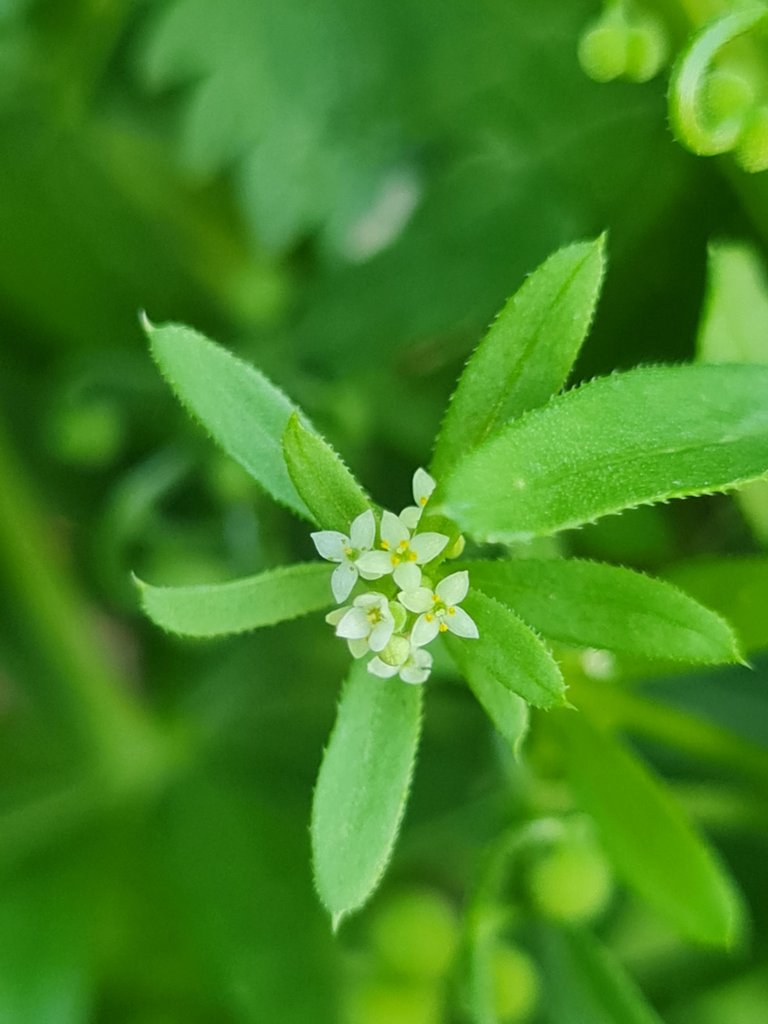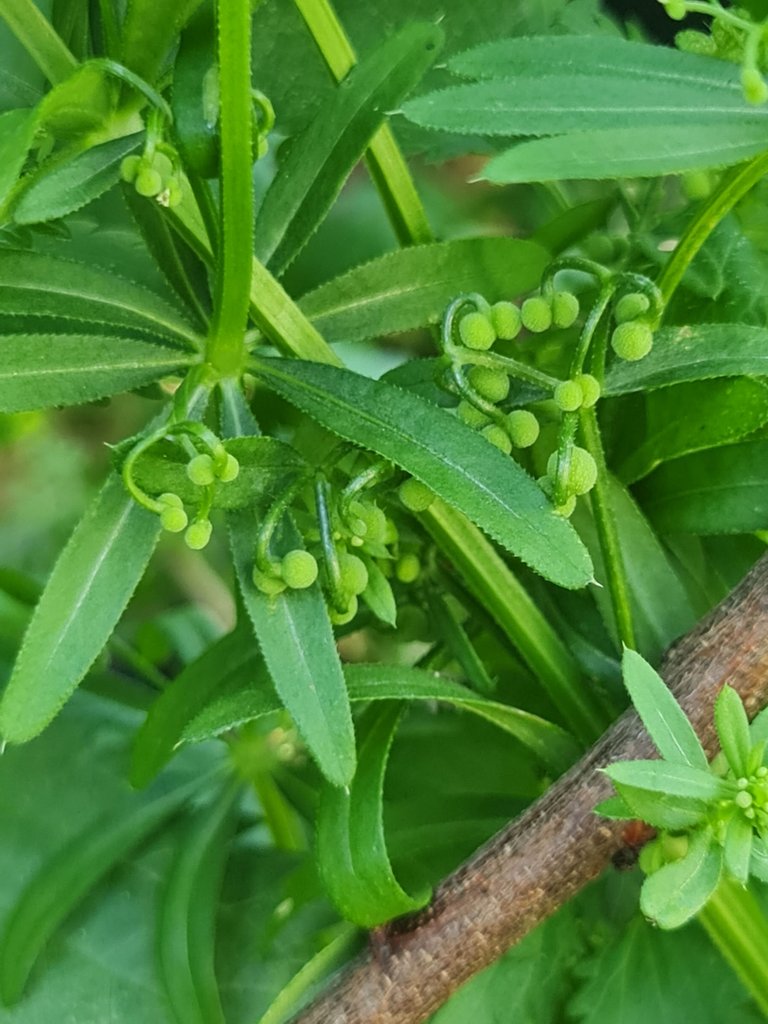
Cleavers (Gallium aparine) interests me. Until about 4 years ago, I couldn't find it around us in Gawler but for the last couple, it's been popping up everywhere!
The whole plant is covered by tiny hairs that make it a kind of living Velcro. One of the common names is Sticky Willie. I can understand the first part 😉
The leaves help it to cling to other plants ('cleave' doesn't just mean 'to cut', it can also mean 'to stick to'). That helps it to climb upwards and its flexible stems give a great deal of agility.
Why do I love it?
It's quite nutritious and tasty when cooked and it is a premiere lymphatic tonic. It helps move lymph in our system.
Lymph carries the wastes from our cells, from the tissues to the portal vein and from there to the liver for metabolism, breakdown and excretion. Its an excellent addition to Halloween night excess. Lymph is also chock full of antibodies and immune cells.

Lymph doesn't get pumped around us in the way that blood does and relies on bodily movement to get it around. A build up of lymph in an affected or damaged area contributes greatly to the swelling and pain. We've all experienced this (ok, maybe one or two haven't) when we gel 'swollen glands' during a sore throat or other infection. The main collection points are in the armpits and just above the pelvis.
Taking Cleavers as a tea, or infusion helps greatly with systemic problems such as infections or swollen glands and crushing and applying it to inflamed areas helps reduce redness and swelling.
Other key lymph movers are Calendula (which is out in abundance now) and Chickweed, which is starting to finish its season now that the warmth is here.
The pics will help you identify it but by far the best way to ID it it to press the leaves against whatever you're wearing. It'll stick well to most fabrics.
An interesting titbit is that Cleavers is in the same family as Coffee, Rubiaceae and the seeds can be collected, roasted and ground as a reasonable coffee substitute without but without that wonderful caffeine hit.

Some of you may have seen that I've been writing a series of posts about herbs and making herbal remedies at home. I want to share what I know of this topic so that, as the world gets crazier, folks will have other avenues of medical care, namely those of themselves and their community. If you look back over this blog, you can see heaps of info on the topic, plus loads and loads of posts on herbs and using Australian bushfoods from a white perspective. If you haven't been around on in the @hivegarden and @naturalmedicine communities for long, you may be interested in looking back. There's w-a-a-a-a-y too much there for me to repost and the Hive system doesn't let you vote on old posts so, if you're happy with what you find, I believe that there is now a tip option...




